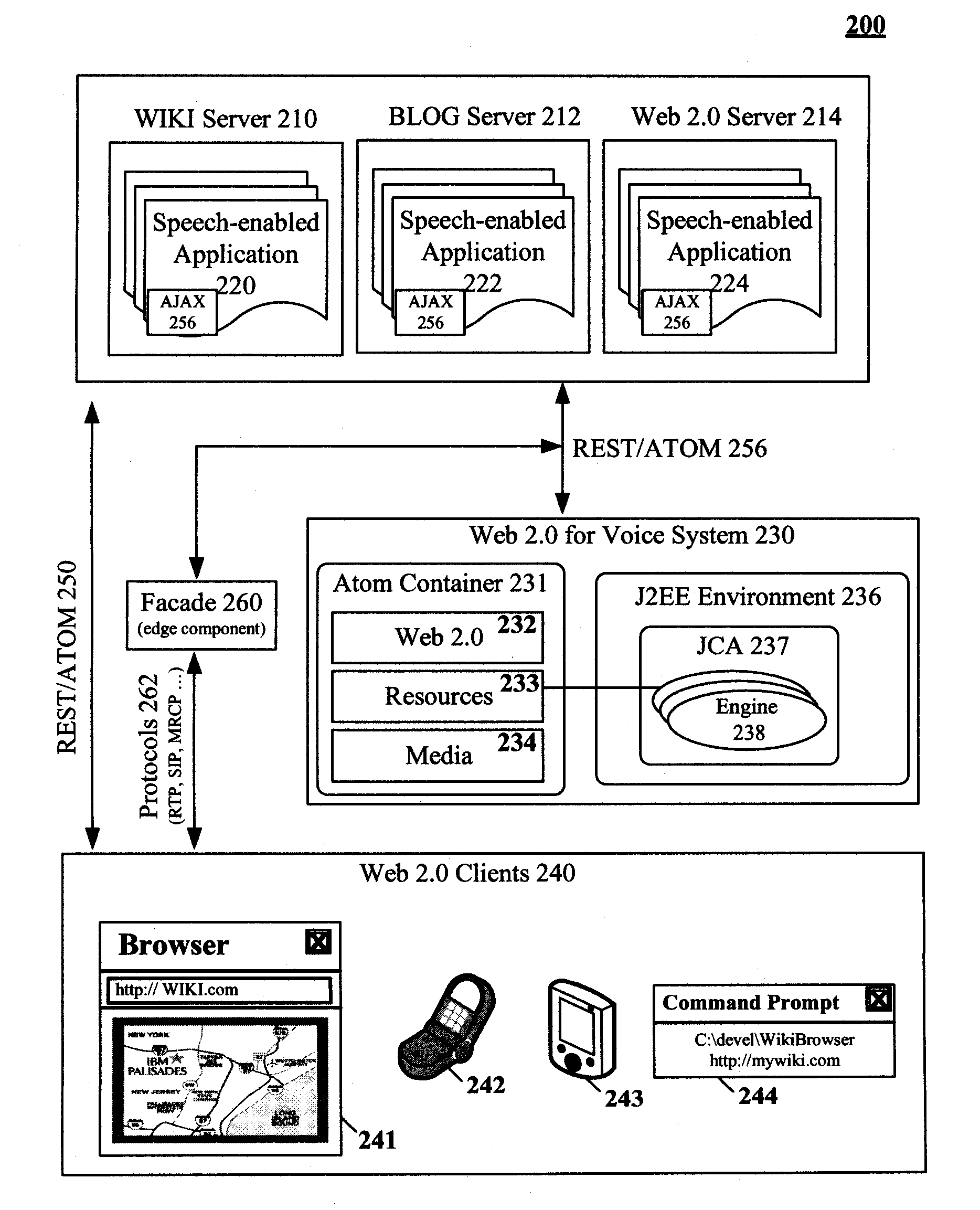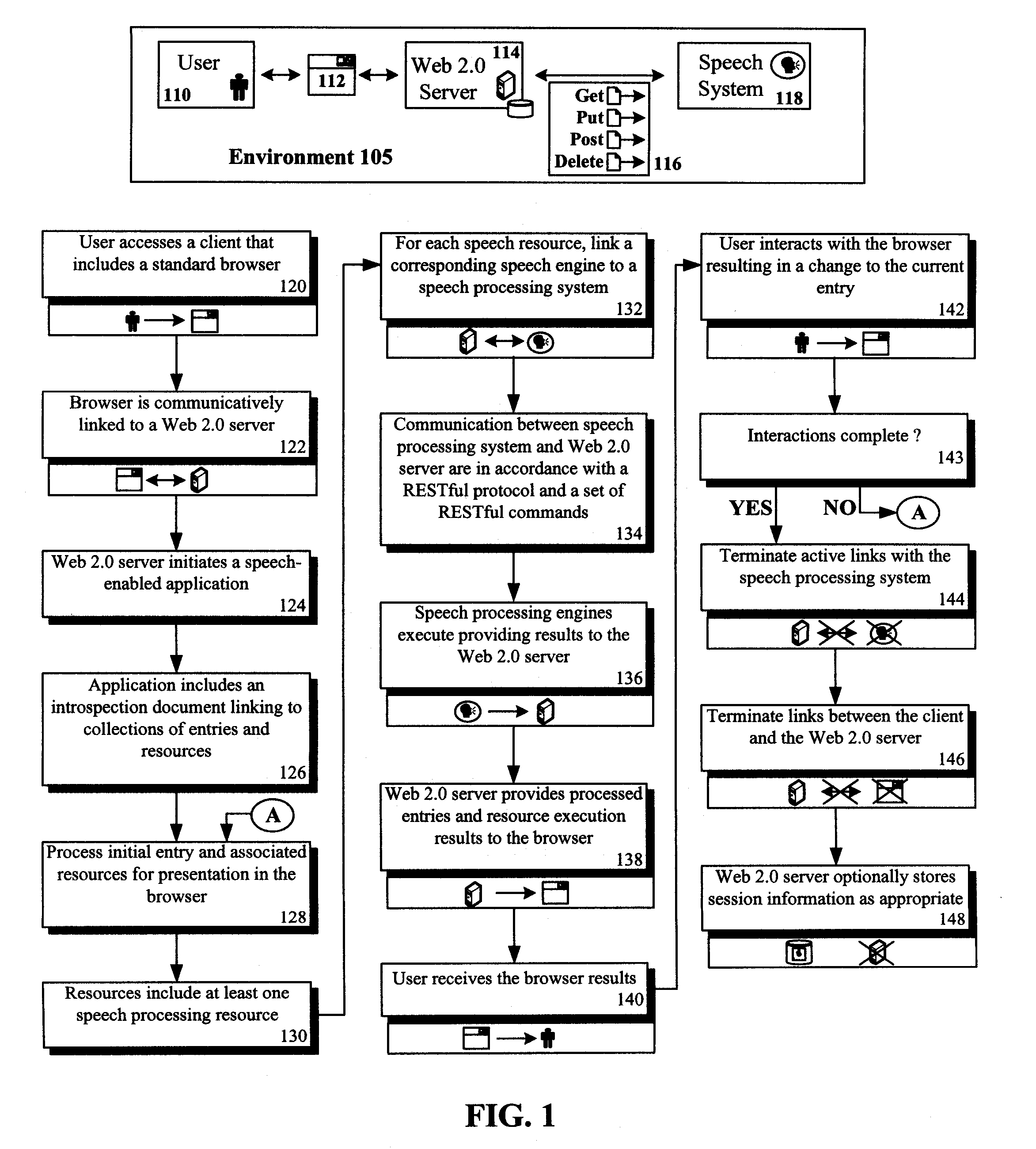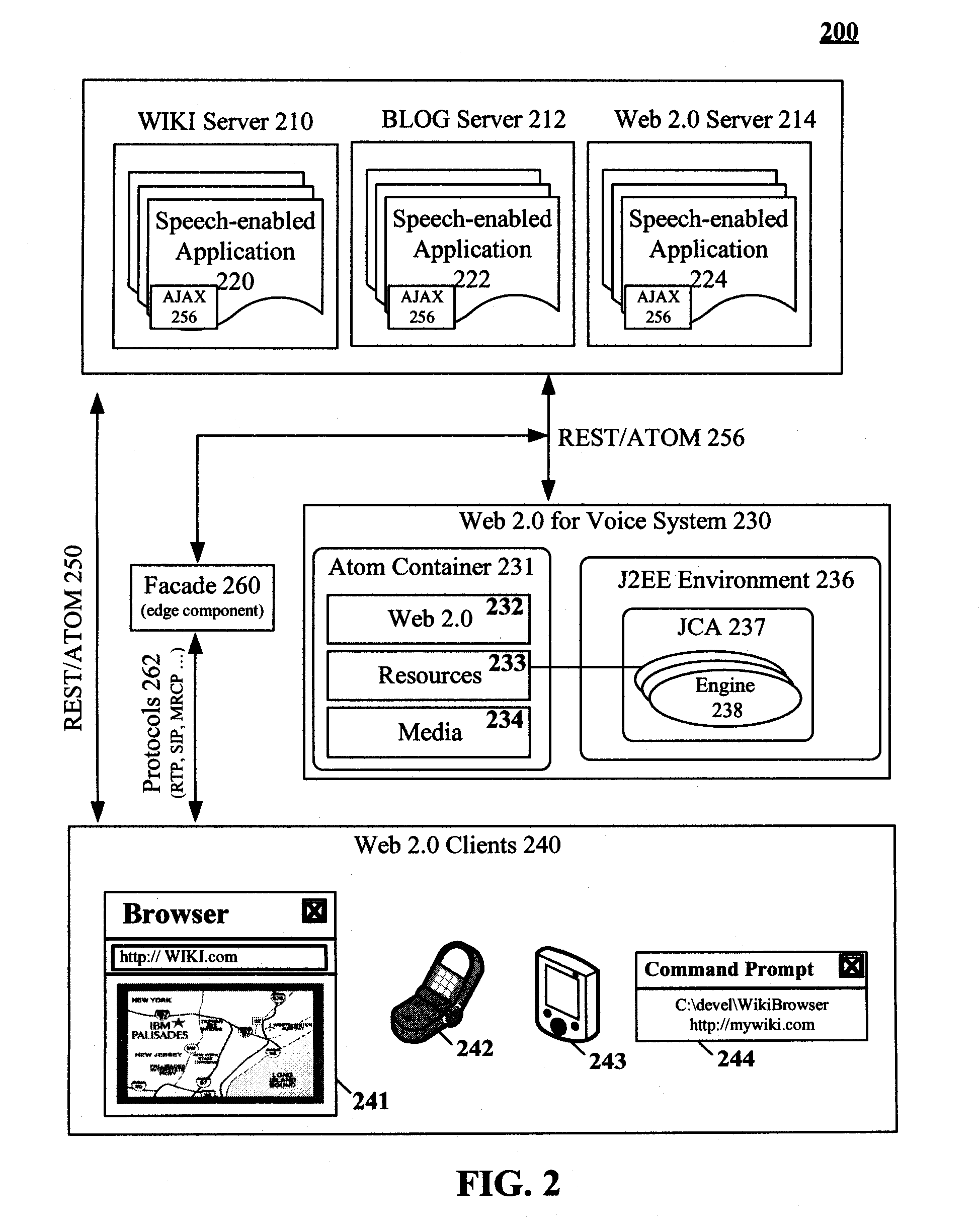Speech processing method based upon a representational state transfer (REST) architecture that uses web 2.0 concepts for speech resource interfaces
a speech processing and rest architecture technology, applied in the field of speech processing technologies, can solve the problems of unidirectional information flow, user inundation with too many information from too many sources, and the appearance of web sites is somewhat flawed
- Summary
- Abstract
- Description
- Claims
- Application Information
AI Technical Summary
Benefits of technology
Problems solved by technology
Method used
Image
Examples
Embodiment Construction
[0023]FIG. 1 is a flow diagram illustrating a method of using Web 2.0 as an interface to speech engines in accordance with an embodiment of the inventive arrangements disclosed herein. The method shown by steps 120-148 can be implemented in a context of a computing environment 105. In environment 105, a user 110 can utilize a browser 112 to access a Web 2.0 server 114. The Web 2.0 server can be a WIKI server, a BLOG server, a MASHUP server, a FOLKSONOMY server, a social networking server, and the like. A speech system 118 can include speech processing engines which can be accessed by the server 114 through use of a set of RESTful commands 116. The RESTful commands 116 can include GET, PUT, POST, and / or DELETE commands. There are no assumptions regarding the client upon which the browser 112 executes other than an ability to communicate with a Web 2.0 server 114.
[0024]In one embodiment, the speech-enabled applications served by server 114 can comply with the ATOM PUBLISHING PROTOCOL ...
PUM
 Login to View More
Login to View More Abstract
Description
Claims
Application Information
 Login to View More
Login to View More - R&D
- Intellectual Property
- Life Sciences
- Materials
- Tech Scout
- Unparalleled Data Quality
- Higher Quality Content
- 60% Fewer Hallucinations
Browse by: Latest US Patents, China's latest patents, Technical Efficacy Thesaurus, Application Domain, Technology Topic, Popular Technical Reports.
© 2025 PatSnap. All rights reserved.Legal|Privacy policy|Modern Slavery Act Transparency Statement|Sitemap|About US| Contact US: help@patsnap.com



